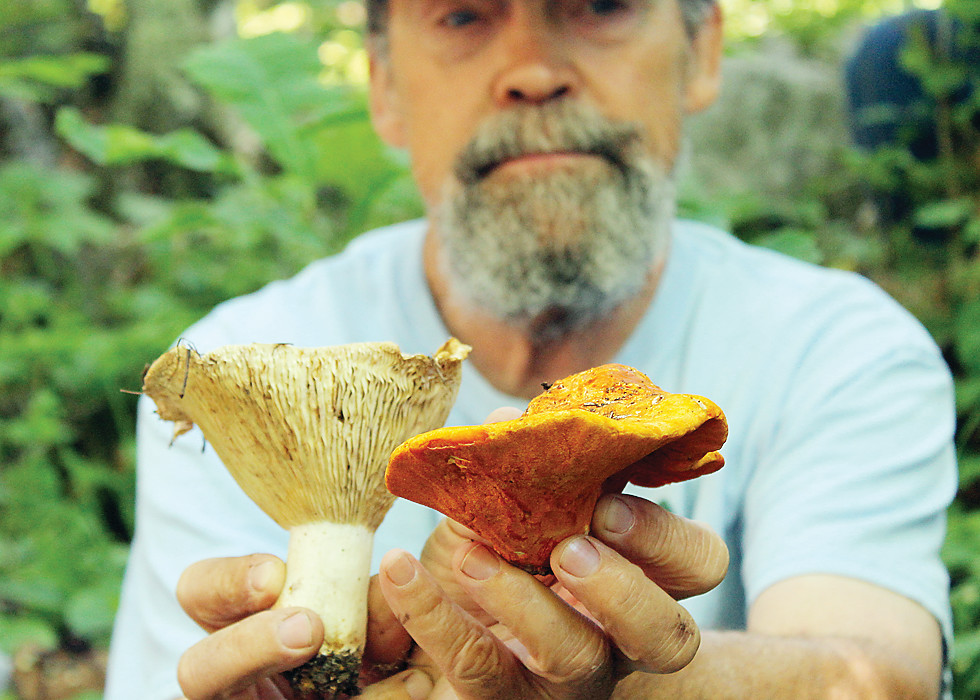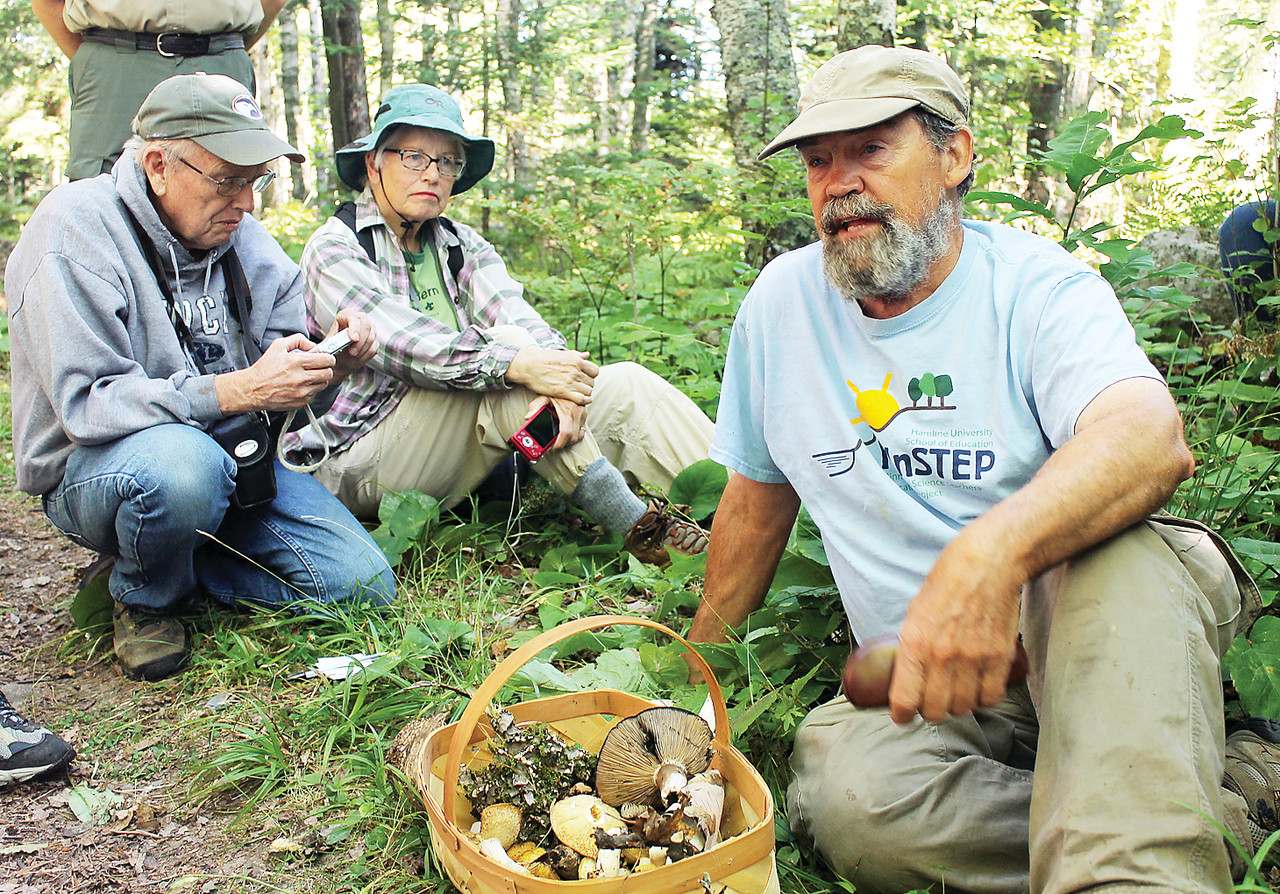Support the Timberjay by making a donation.
Weirdness and wonder
A walk in the August woods with naturalist and educator Larry Weber
SOUDAN—“August is awesome.” That’s according to Larry Weber, a naturalist, author, and educator whose excitement for everything in the woods was bubbling over during a two-hour mushroom walk …
This item is available in full to subscribers.
Attention subscribers
To continue reading, you will need to either log in to your subscriber account, or purchase a new subscription.
If you are a current print subscriber, you can set up a free website account and connect your subscription to it by clicking here.
If you are a digital subscriber with an active, online-only subscription then you already have an account here. Just reset your password if you've not yet logged in to your account on this new site.
Otherwise, click here to view your options for subscribing.
Please log in to continue |
Weirdness and wonder
A walk in the August woods with naturalist and educator Larry Weber
SOUDAN—“August is awesome.” That’s according to Larry Weber, a naturalist, author, and educator whose excitement for everything in the woods was bubbling over during a two-hour mushroom walk he led Saturday at Lake Vermilion Soudan Underground Mine State Park.
It was part of a regular series of nature-related programs being offered at the park this summer, and it attracted well over a dozen people from around the area.
Weber likes August, because it’s the time when the summer’s bounty is at its peak, and it’s often the best time of year for finding mushrooms. Unlike some mushroom hunters, however, Weber said he doesn’t eat the edible ones he finds. Still, that doesn’t dampen his enthusiasm for the hunt or the discoveries. And the group that he took to the woods on Saturday discovered plenty, including dozens of mushrooms, shelf fungi, and even a bright yellow slime mold slowly oozing from a downed log.
While Weber also leads wildflower walks, participants on those treks aren’t allowed to pluck what they find because it can harm the plant. That’s not the case with mushrooms, which aren’t plants at all. They’re fungi and the vast majority of these organisms survive as whitish strands of living tissue, known as mycelia, that grow underground or throughout dead logs or other forest floor debris, said Weber.
“The mushroom is only the fruiting body,” said Weber, who likens the harvesting of a mushroom to the picking of an apple.
There are plenty of myths about mushrooms, notes Weber, and one is that many of them are deadly if eaten, or even touched. He said plenty of mushrooms are poisonous, but only a rare handful of species are lethal. Many others are edible, although only a few varieties in the North Country, such as chanterelles, morels, honey mushrooms, and shaggy manes are considered choice eating.
But sometimes, notes Weber, mushrooms that aren’t edible can become edible, even choice, as a result of changes resulting from other fungi. Take the lobster mushroom, he said, a bright orange, knobby hunk of fungus that can look pretty unappetizing as it emerges from the forest floor. This strange mushroom starts out as a different mushroom entirely, one known only by its genus name Russula. When the Russula mushroom is, itself, fed upon by a different type of fungus (a mold), it detoxifies compounds in the Russula that would normally make a person sick, and changes its shape, color, and texture at the same time, turning a fairly conventional gilled mushroom into something entirely different.
It’s these kinds of weird properties in fungi that intrigue Weber, and he’s not alone. He taught Duluth middle schoolers for years about things in the woods and he said few things could get youngsters more excited than the opportunity to hunt mushrooms.
And as if fungi aren’t strange enough, Weber said slime molds get even more interesting. “Fungi people don’t like to talk about them,” said Weber, and that could well be because no one is really quite clear what they are.
“But they’re not fungi,” said Weber. Instead, what we think of as slime molds are really vast congregations of amoeba-like cells that normally live independently in the soil, where they feed on fungi and bacteria. Under food-stressed conditions, the individual cells will send out a chemical signal that causes them all to gather together into a single mass that can reach many inches, sometimes feet, across. Once together, the once-independent cells begin to take on specific roles. The slime mold can even move as a single body, even though it lacks a central brain. The primary purpose for these cellular gatherings is reproduction. Some of the gathered cells form fruiting bodies and some even become spores that will be released by the fruiting bodies as the start of a new generation.
But it doesn’t take something as bizarre as a slime mold to get Weber excited. When someone on the trek noticed a wolf spider on the trail, Weber was all over it, gently picking it up so everyone could get a better look (note to my mother… you’d better take a sedative about now) as it crawled along his hands and arm.
It’s all in a morning’s walk, in “awesome August,” with Larry Weber. If you don’t leave the woods with a little greater appreciation for the wonders of the natural world, you’d better check your pulse.









